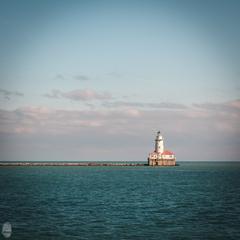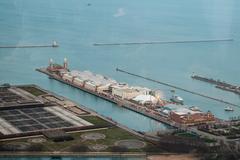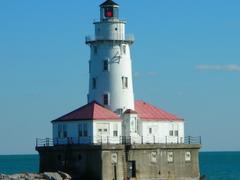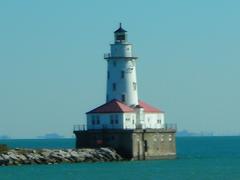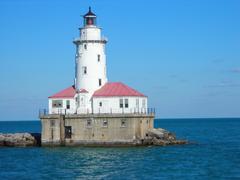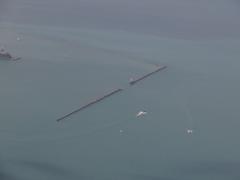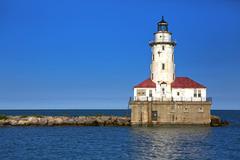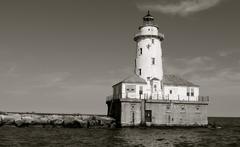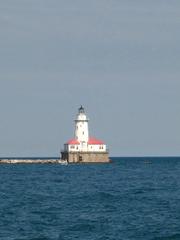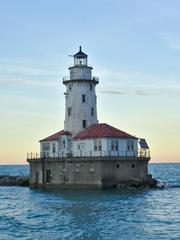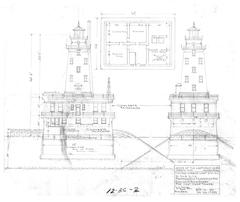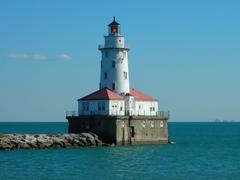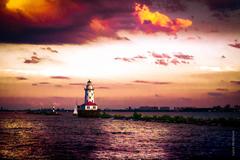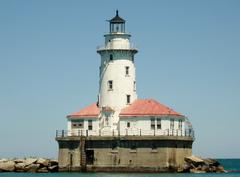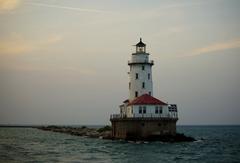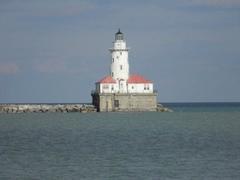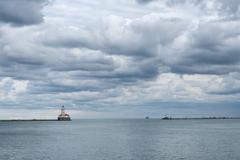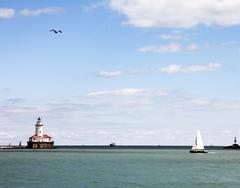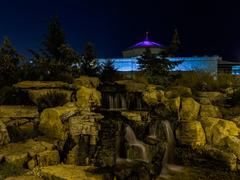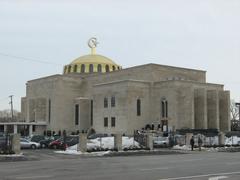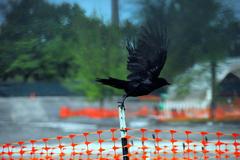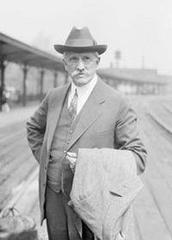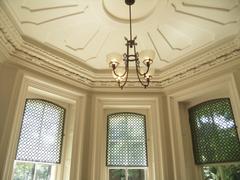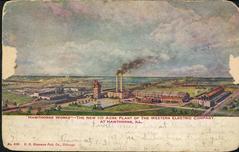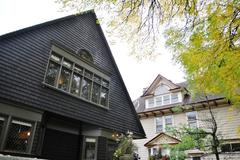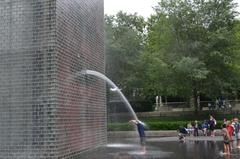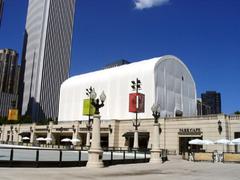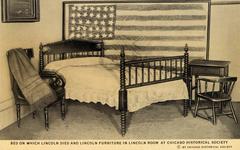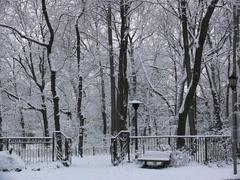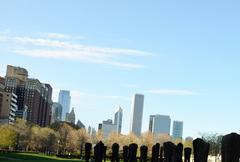
Visiting Chicago Harbor Lighthouse: Hours, Tickets, and Historical Sites
Date: 01/08/2024
Introduction
The Chicago Harbor Lighthouse is a significant landmark that blends rich history, architectural prowess, and cultural importance. Nestled at the mouth of the Chicago Harbor, this lighthouse is not just a navigational aid but a symbol of Chicago’s maritime heritage. From its early beginnings in 1831 to its current status as an official Chicago landmark, the lighthouse has undergone numerous transformations, each reflecting the city’s growth as a major port. This guide aims to provide a comprehensive overview of the Chicago Harbor Lighthouse, offering insights into its historical background, architectural significance, visitor information, and ongoing preservation efforts. Whether you’re a history enthusiast, a photography aficionado, or a casual tourist, this guide will help you make the most of your visit to this iconic structure. For further details on its rich history, visit Chicago Detours.
Table of Contents
History of the Chicago Harbor Lighthouse
Early Beginnings
The history of the Chicago Harbor Lighthouse is deeply intertwined with the city’s development as a major port. The first lighthouse in the area was constructed in 1831 at the mouth of the Chicago River, even before the city was officially incorporated. However, this initial structure faced significant issues and soon collapsed. Its replacement, built in 1832, stood 40 feet high near Fort Dearborn and was the first lighthouse on the Great Lakes. By 1848, there were 59 lighthouses on the Great Lakes, underscoring the importance of these navigational aids for maritime activities (Chicago Detours).
The Second Lighthouse
With the opening of the Illinois and Michigan Canal in 1848, Chicago’s port became a crucial link between the eastern seaboard and the Mississippi River, quickly becoming the nation’s busiest port. The original lighthouse proved inadequate for the increased traffic, leading to the construction of a new lighthouse in 1859. This second lighthouse, made of iron and featuring an octagonal design, was built at the end of one of the newly constructed piers. Despite its improved visibility, it faced challenges such as being obscured by thick smoke from steamers and nearby factories (Chicago Detours).
The 1893 Lighthouse
In the 1880s, a breakwater was constructed to protect Chicago’s harbor, and plans for a new, more powerful lighthouse began. The Lighthouse Board proclaimed that Chicago’s harbor was the most important on the lakes, with a greater average number of daily arrivals and departures during the navigation season than any other in the United States. The new lighthouse was to be located at the mouth of the river, near the original lighthouse site (Chicago Detours).
The city was also preparing for the 1893 World’s Columbian Exposition, and the lighthouse was under construction during the World’s Fair. It was completed just as the Exposition was ending. A state-of-the-art Fresnel lens, which had been on display at the Fair, was installed in the lighthouse, illuminating for the first time on November 9, 1893. This new structure replaced the 1859 iron lighthouse, which was put out of commission (Chicago Detours).
Relocation and Modifications
In the early 20th century, the lighthouse underwent significant changes. The breakwater was extended in 1918, necessitating the relocation of the lighthouse to the new southern tip. The structure also included a three-story keeper’s living facilities, a fog signal building, and a boathouse. Interestingly, Chicago was once much foggier, and the fog signal was a crucial feature. However, due to climate change, there is significantly less fog today (Chicago Detours).
Modern Era and Preservation Efforts
The 1893 lighthouse is the structure that stands in Chicago’s harbor today. It is now an official Chicago landmark and remains active, though it has been automated. Despite its historical significance, the lighthouse has often been overlooked in lists of Chicago sightseeing attractions. However, it remains a defining work of architecture that graces the city (Chicago Detours).
In recent years, there have been efforts to restore and preserve the lighthouse. A group of boaters and preservationists have been working to restore the lighthouse and turn it into a tourism magnet. There are plans to partner with schools and other organizations to bring children from underserved communities to visit the lighthouse. Additionally, there are discussions about turning the lighthouse into a museum to protect it from the elements and create a resource for visitors (Save the Lighthouse).
Architectural Significance
The Chicago Harbor Lighthouse is not just a navigational aid but also an architectural landmark. Its iron construction and octagonal design are notable features. The lighthouse also houses a state-of-the-art Fresnel lens, which was a significant technological advancement at the time of its installation. The structure’s design and functionality have made it a subject of interest for architectural historians and lighthouse enthusiasts alike (Chicago Detours).
Cultural Impact
The lighthouse has played a crucial role in Chicago’s maritime history. It has guided countless ships safely into the harbor, marking dangerous passageways and harbor entry points. The lighthouse’s presence has been a constant in the ever-evolving landscape of Chicago’s waterfront. Its historical and cultural significance makes it an essential part of the city’s heritage (Chicago Detours).
Future Prospects
The future of the Chicago Harbor Lighthouse looks promising, with ongoing restoration efforts and plans to enhance its role as a tourist attraction. The lighthouse’s potential transformation into a museum could provide educational opportunities and increase public awareness of its historical significance. These efforts aim to ensure that the lighthouse continues to be a beacon of Chicago’s rich maritime history for generations to come (Save the Lighthouse).
Visitor Information
Ticket Prices
Currently, there are no fees to view the lighthouse from the surrounding area. However, if future plans to convert the lighthouse into a museum materialize, ticket prices may be introduced. Stay updated by checking the official lighthouse website or local tourism boards.
Opening Hours
The lighthouse itself is not open for public tours yet, but the surrounding area is accessible year-round. The best viewing times are during daylight hours. Keep an eye on official announcements for any changes in visiting hours.
Travel Tips
- Best Time to Visit: Spring and fall offer pleasant weather and fewer crowds.
- Getting There: The lighthouse is best viewed from Navy Pier. Consider taking a boat tour for a closer look.
- What to Bring: Binoculars for a closer view, a camera for capturing the beautiful architecture, and comfortable walking shoes.
Nearby Attractions
- Navy Pier: A famous landmark featuring dining, shopping, and entertainment options.
- Millennium Park: Home to the iconic Cloud Gate sculpture (The Bean).
- Art Institute of Chicago: One of the oldest and largest art museums in the United States.
Accessibility
The areas surrounding the lighthouse, including Navy Pier, are wheelchair accessible. Plans for the museum may include enhanced accessibility features.
Special Events and Guided Tours
Currently, there are no regular guided tours of the lighthouse. However, special events and seasonal tours may be offered in the future. Check the official website for updates.
Photographic Spots
- Navy Pier: Offers some of the best views of the lighthouse, especially at sunrise and sunset.
- Boat Tours: Provide unique perspectives and opportunities for close-up shots.
FAQ
What are the visiting hours for the Chicago Harbor Lighthouse? The lighthouse itself is not open for public tours, but the surrounding area is accessible year-round, with the best viewing times during daylight hours.
Are there guided tours available at the Chicago Harbor Lighthouse? Currently, there are no regular guided tours, but special events and seasonal tours may be offered in the future. Check the official website for updates.
How much does it cost to visit the Chicago Harbor Lighthouse? There are no fees to view the lighthouse from the surrounding area. Future museum plans may include ticket prices.
Is the Chicago Harbor Lighthouse accessible? The areas surrounding the lighthouse, including Navy Pier, are wheelchair accessible. Future plans for the museum may include enhanced accessibility features.
Conclusion
In summary, the Chicago Harbor Lighthouse is a vital part of the city’s history and a significant architectural landmark. Its journey from the early 19th century to the present day reflects the growth and development of Chicago as a major port city. The ongoing preservation efforts highlight the importance of maintaining this historical structure for future generations to appreciate and learn from. Stay updated with the latest developments and plan your visit to experience this iconic piece of Chicago’s maritime heritage.
References
- Chicago Detours. (n.d.). A tale of four lighthouses. Retrieved from Chicago Detours
- Save the Lighthouse. (n.d.). Media coverage. Retrieved from Save the Lighthouse
- Wikipedia. (n.d.). Chicago Harbor Light. Retrieved from Wikipedia
- US Lighthouses. (n.d.). Chicago Harbor Lighthouse. Retrieved from US Lighthouses
- Navy Pier. (n.d.). Retrieved from Navy Pier
- The Savvy Globetrotter. (n.d.). Things to do in Chicago in August. Retrieved from The Savvy Globetrotter
- Chicago Sun-Times. (2023, May 24). Chicago Harbor Lighthouse museum plans. Retrieved from Chicago Sun-Times

